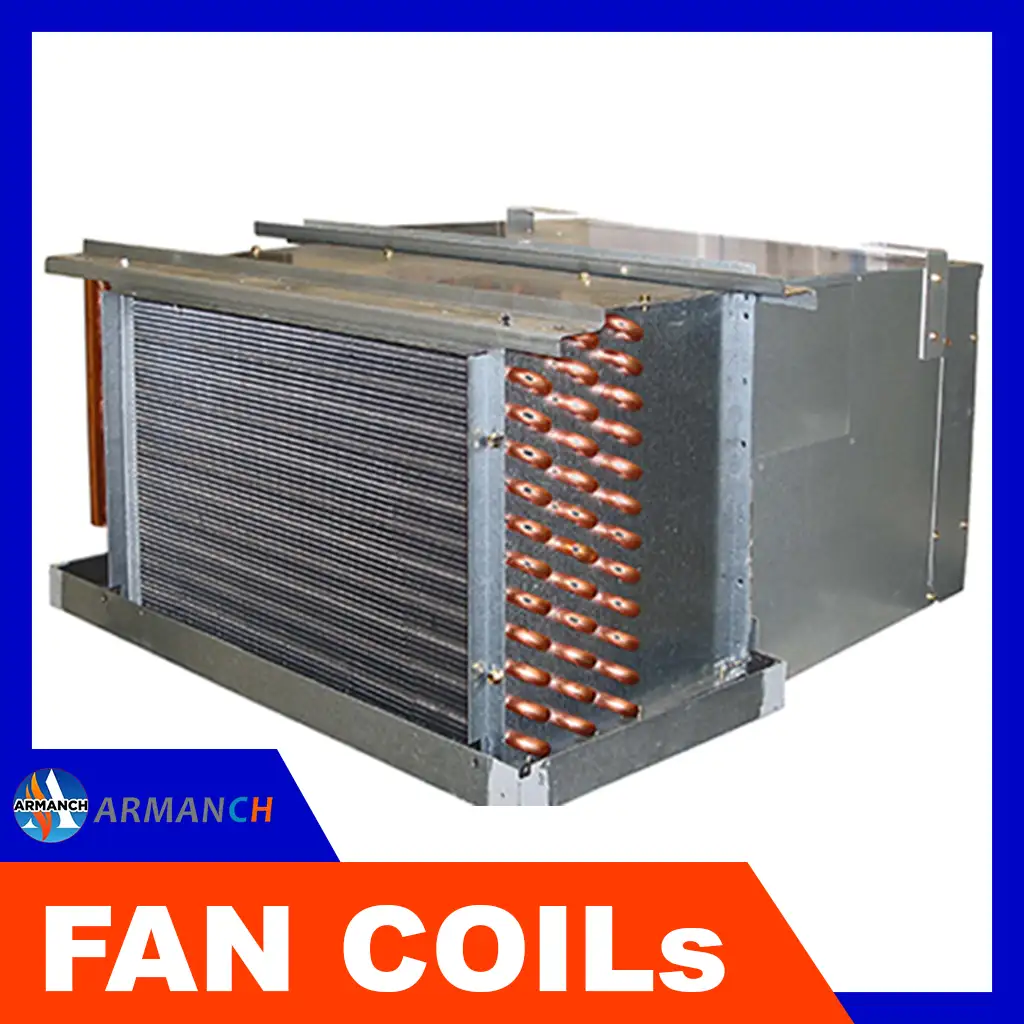
What Are the Uses of a Fan Coils?
Where are Fan Coils Used?
Fan coils are a popular choice for heating, ventilation, and air conditioning (HVAC) systems in commercial and industrial buildings. They’re ideal for spaces with varying temperature needs, like offices, hotels, schools, and apartments.
What Makes Fan Coils Great?
Fan coils are known for being:
⦁ Efficient: They use less energy than traditional systems due to their compact size.
⦁ Versatile: They can heat and cool, making them perfect for spaces with changing needs.
⦁ Cost-effective: They’re generally less expensive than other HVAC options.
⦁ Quiet: Their design makes them suitable for noise-sensitive areas like offices and classrooms.

These qualities make them a popular choice for both new construction and upgrades to existing systems (retrofits). They can also work alongside other HVAC equipment like chillers and boilers to create a complete climate control solution.
Are Fan Coils Considered Terminal Units?
Yes, fan coil units (FCUs) are a type of terminal unit in HVAC systems. Terminal units deliver conditioned air to occupied spaces. FCUs manage temperature and air quality in individual rooms or zones. They circulate air and provide heating or cooling as needed. Typically, they connect to a central HVAC system to receive conditioned air for distribution within a space.
Do Fan Coils Provide Fresh Air?
Fan coil units primarily recirculate air within the space they serve and do not inherently provide fresh air. They are designed to heat or cool the air within a room or area by passing it over a coil filled with hot or cold water. However, they can be integrated with HVAC systems to introduce fresh air into the space. This integration is often seen in systems where indoor air quality is a concern, such as in commercial buildings and healthcare facilities.
What are the Parts of a Fan Coil Unit?
Understanding the components of a fan coil unit helps in appreciating its functionality and versatility. The primary components of a fan coil unit include:
⦁ Coil: The core component where heat exchange occurs. It can be either a heating coil or a cooling coil, depending on the desired temperature control.
⦁ Fan: Circulates air over the coil and distributes it into the room. The fan ensures that the air is adequately mixed and distributed evenly throughout the space.
⦁ Filter: Removes dust and particulates from the air before it passes over the coil, maintaining indoor air quality and preventing the coil from becoming dirty and less efficient.
⦁ Control System: Allows for the adjustment of speed, temperature and fan speed. It can range from a simple thermostat to a more complex digital control system including Modulating/on-off valve.
⦁ Housing: Encloses all the components and provides a finished appearance suitable for installation in various environments.

Benefits and Drawbacks of Fan Coil Systems
Fan coil systems offer several advantages, making them a popular choice in diverse settings:
Flexibility: FCUs can be installed in various configurations, including wall-mounted, ceiling-mounted, and floor-mounted.
Individual Room Control: They provide the ability to control the temperature in individual rooms or zones, enhancing comfort and allowing for energy savings.
Energy Efficiency: FCUs can be highly energy-efficient, especially when integrated with modern control systems.
Cost-Effectiveness: They are relatively cost-effective compared to other HVAC options.
Quiet Operation: Modern FCUs are designed to operate quietly, suitable for environments where noise is a concern.
While fan coil systems offer numerous benefits, they also have some drawbacks:
⦁ Limited Fresh Air Supply: FCUs do not inherently provide fresh air, requiring additional ventilation systems for fresh air introduction.
⦁ Maintenance Requirements: FCUs require regular maintenance, including cleaning or replacing filters and keeping the coils clean.
⦁ Space Constraints: Depending on the design, FCUs can occupy significant space within a room.
⦁ Noise Levels: Some units can produce noticeable noise, particularly at higher fan speeds.
⦁ Initial Installation Complexity: Integrating FCUs into a building’s HVAC system can be complex, requiring proper planning and design.
Fan coil systems have both advantages and disadvantages. Consider these factors when deciding if a fan coil system is the right fit for your building’s needs.
- HVAC-R
- Design and Permit Services
- Hydronic & Hot Water Services
- Heating and Cooling Services
- Air Conditioning Services





